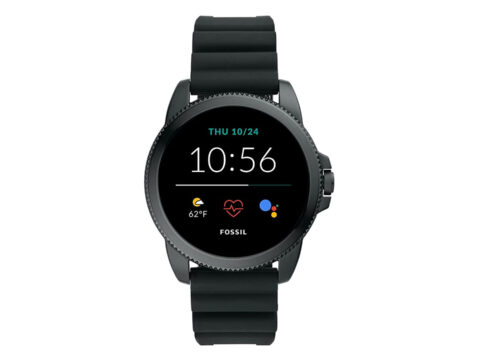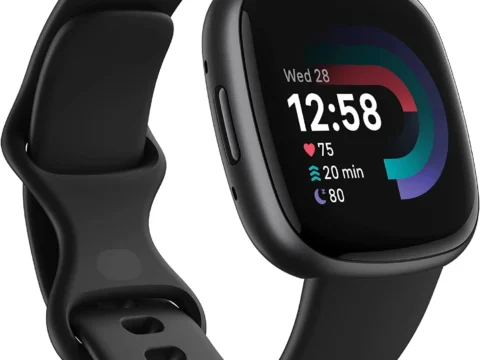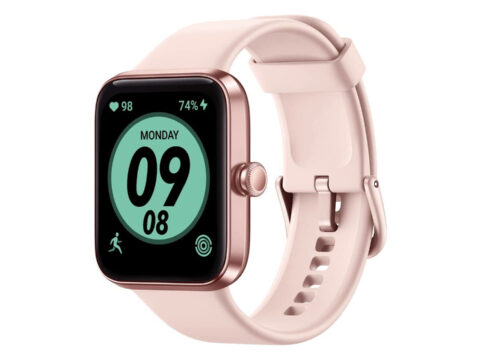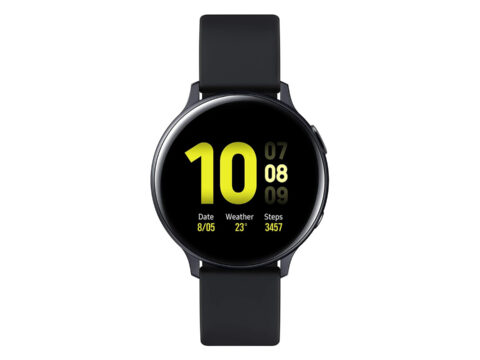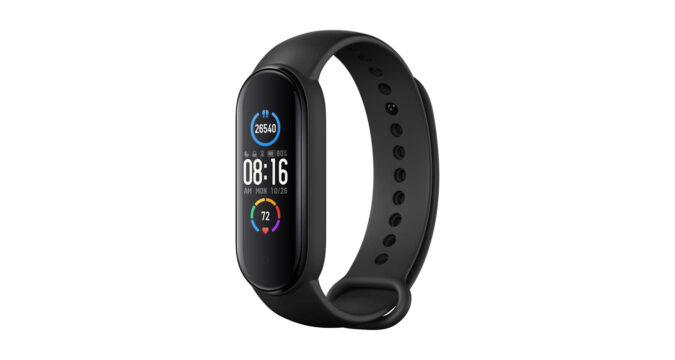
Inexpensive and with tons of functions: That is what Xiaomi promises for the fifth generation of the popular Mi Band. We did test what the Xiaomi Mi Band 5 can do and how it differs from its predecessors.
Xiaomi’s Mi Band was considered an insider’s tip among the inexpensive fitness trackers. With the Mi Band 4 at the latest, it was clear that the competition, such as Fitbit or Garmin, would have to dress warmly. Xiaomi strengthens its position again with the Mi Band 5. It was somewhat under pressure in the low-price segment, where the Honor Band 5 or the Realme Band challenged Xiaomi for the crown. With the Mi Band 5, however, it is clear: The king of inexpensive fitness trackers is back and shows the competition how it is done.
In this article
Technical details
| Size screen | 2,8 cm (1,1 inches) |
| Wrist band material | Silicone |
| Size watch | 46,95 x 18,15 x 12,45 mm |
| Connectivity | Bluetooth 5.0 |
| GPS | Not supported |
| Battery life | Up to 14 days |
| Supported systems | Android 5.0 or later, iOS 10.0 or later |
| Water resistance | Up to 50 m |
| Display | AMOLED |
| Sensors | Heart frequency sensor, 6-axis-sensor |
Design and setup
Those who have already held a Mi Band in their hands will not expect any big surprises with the Xiaomi Mi Band 5: The package includes a black silicone wristband, the tracker itself, a charging adapter and a user manual. The design of the tracker and the wristband is functional. The AMOLED display is slightly larger, measuring 1.1 inches compared to the predecessor.
Xiaomi has also increased the maximum brightness to 450 nit, but reduced the color depth to 16 bit. This is immediately noticeable in practice: The Xiaomi Mi Band 5 namely avoids an annoyance of the predecessors and can still be read well in direct sunlight. The display is also very good in other respects. It shows all displays very sharply and clearly and can be customized with various themes.
The silicone wristband, on the other hand, is less appealing. Xiaomi did not make any changes compared with the Xiaomi Mi Band 4. This means that the wristband is comfortable to wear, but it still looks pretty cheap. Furthermore, the clasp made a fiddly impression in the test. However, once you get used to the somewhat awkward mechanism, where we have to fix the strap with a kind of metal pin, you will not notice it after a short time. As with the Mi Band 4, various wristbands from third-party suppliers are available as an alternative. They are priced in the single-digit euro range and significantly enhance the Xiaomi Mi Band 5’s looks.
Finally, the setup of the Xiaomi Mi Band 5 does not differ from that of the predecessor models: We first install the Mi Fit app and create an account. Both the app and the Xiaomi Mi Band 5 can be used in German after we have installed a current firmware update. As with the Mi Band 4, the localization makes a flawless impression – we did not notice any errors in the test.
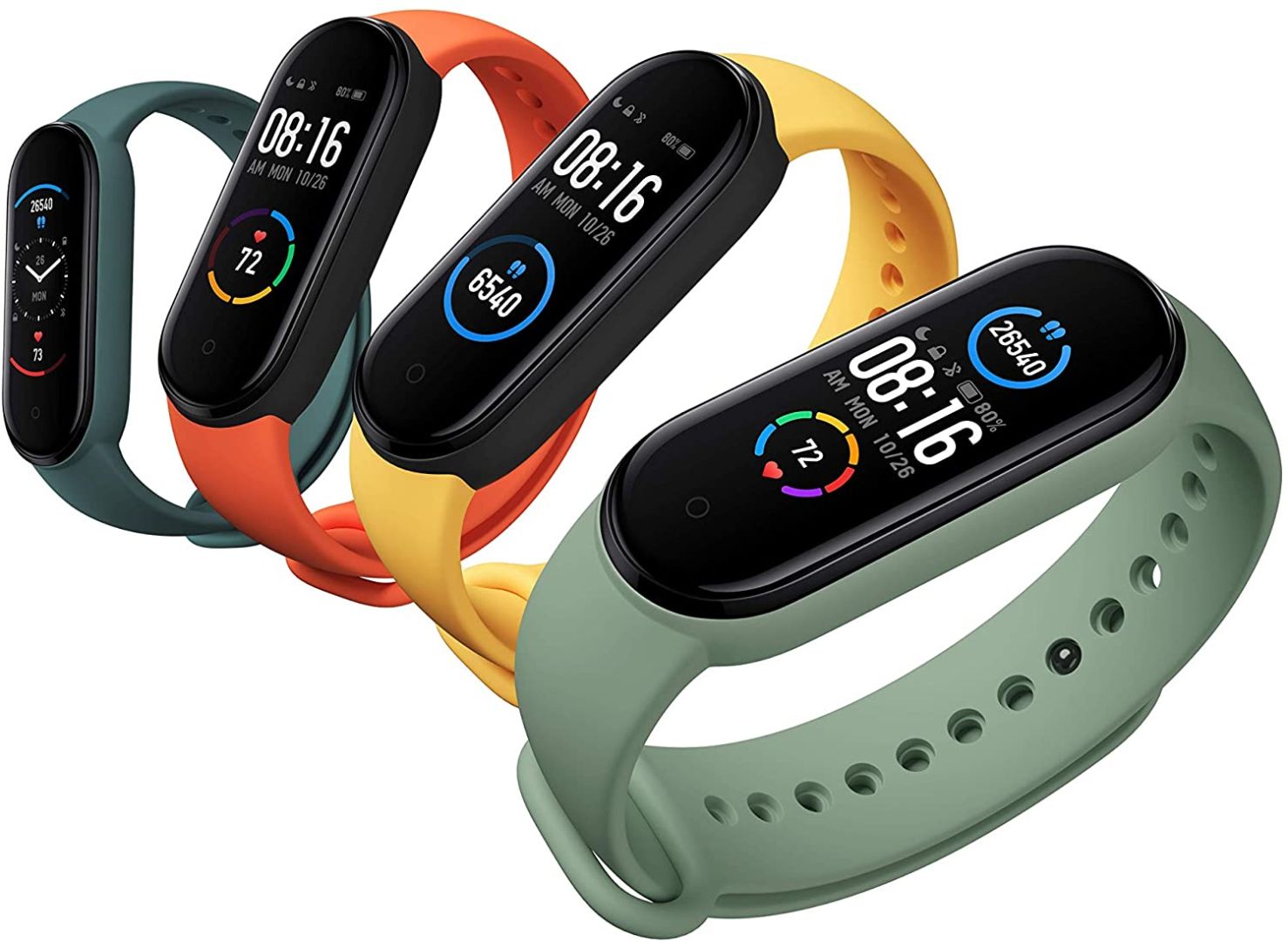
App
The Mi Fit app, which we use to pair the Xiaomi Mi Band 5 with, has hardly changed compared to its predecessors – but there is one important innovation, and it is quite something. The app now does without advertising. We had criticized this in our review of the Mi Band 4. It is all the better that Xiaomi now does without it.
Otherwise, the Mi Fit app scores as usual with a high degree of clarity and well-prepared data. All settings and trackings are easy to find and presented in different, compact diagrams. Nothing has changed in the activities that we can record via the app either: We can manually start workouts via the app and specify which workout types the Mi Band should show us directly in the tracking selection. The app offers a comprehensive selection of different activities, including jumping rope and – no joke – driving, but also brushing our teeth.
Mi Band 5: The Software
By the way, those who do not want to use Xiaomi’s app can reach for the Android app Tools & Mi Band. It now supports the Xiaomi Mi Band 5 and provides new features, such as a permanent heart rate measurement with a matching dashboard or a special alarm clock for naps. The open-source solution Gadgetbridge also supports the Xiaomi Mi Band 5, but requires the Mi Fit app for the first pairing.
Activity
Users who want to use the Xiaomi Mi Band 5 for activity tracking can manually set their own daily goal via the app. The Xiaomi Mi Band 5 then informs us on the display about the steps we have already taken and, if desired, when the daily goal has been reached. The app also shows how many days in a row we have reached the activity goal. If you want, you can also set the Xiaomi Mi Band 5 to remind you to move when you are inactive. Users can also configure this reminder individually.
Like the Mi Band 4, the Xiaomi Mi Band 5 does not automatically measure the pulse permanently from the factory, but only when manually activated. However, we can activate permanent pulse measurement via the app so that the Xiaomi Mi Band 5 not only records our heart rate, but can also analyze activities, stress and sleep. The app indicates how many minutes we spent in resting pulse, relaxed, light, heavy as well as in aerobic and anaerobic state or VO2 max threshold.
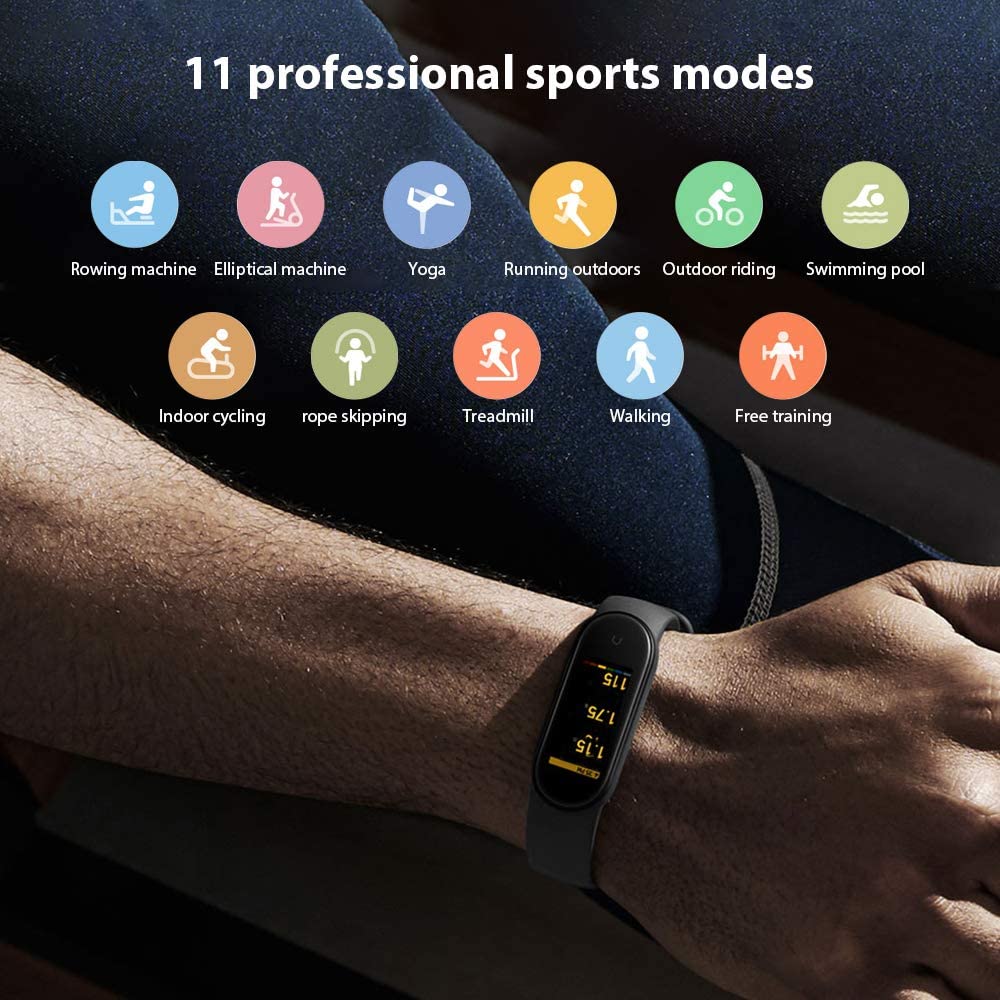
The heart rate measurement worked surprisingly reliably in the test and only deviated a few beats from the measurement via chest strap. We noticed positively that the Xiaomi Mi Band 5 does not seem very sensitive when measuring the heart rate and, unlike many other trackers, there are no measurement inaccuracies when we wear the wristband on different parts of the arm and tightened differently.
However, there is a small drawback in activity tracking: The pedometer recorded our steps rather inaccurately and, for example, measured 150 steps during a 15-minute car ride, although we did not move at all. However, the tracker is still sufficient as an orientation for a daily goal.
Training
The Mi Band 5 records training sessions in various sports in addition to the normal activity tracking, including yoga, rope jumping or strength training, among other standards like running, cycling and swimming. The wristband does not have its own GPS, but the app records the distance covered when we pair the Mi Band with a smartphone. This works reliably and accurately, and the app displays the route via Google Maps after the workout is completed.
If you want, you can also track a training session without GPS detection, but then you should not put too much stock in the measured distance: The Mi Band 5 indicated the same run of around 3.7 kilometers in the test without GPS once with 2.2 kilometers and once with 4.0 kilometers. At least the heart rate monitor works, so athletes who leave their smartphone at home can record heart rate and calories burned exclusively with the Mi Band.
Like its predecessor, the Xiaomi Mi Band 5 makes an exception for heart rate recording: Swimming training can only be tracked via arm strokes. The Mi Band 5 also recognizes the swimming style used and allows entering the lane length in the pool. Swimming otherwise works smoothly with the Mi Band 5, which has a water resistance of 5ATM (40 meters) like the Mi Band 4. Thus, it is suitable for wearing in the shower, on the water surface or in the rain – however, diving or use under the influence of strong splashing water (water skiing, surfing) should be avoided.
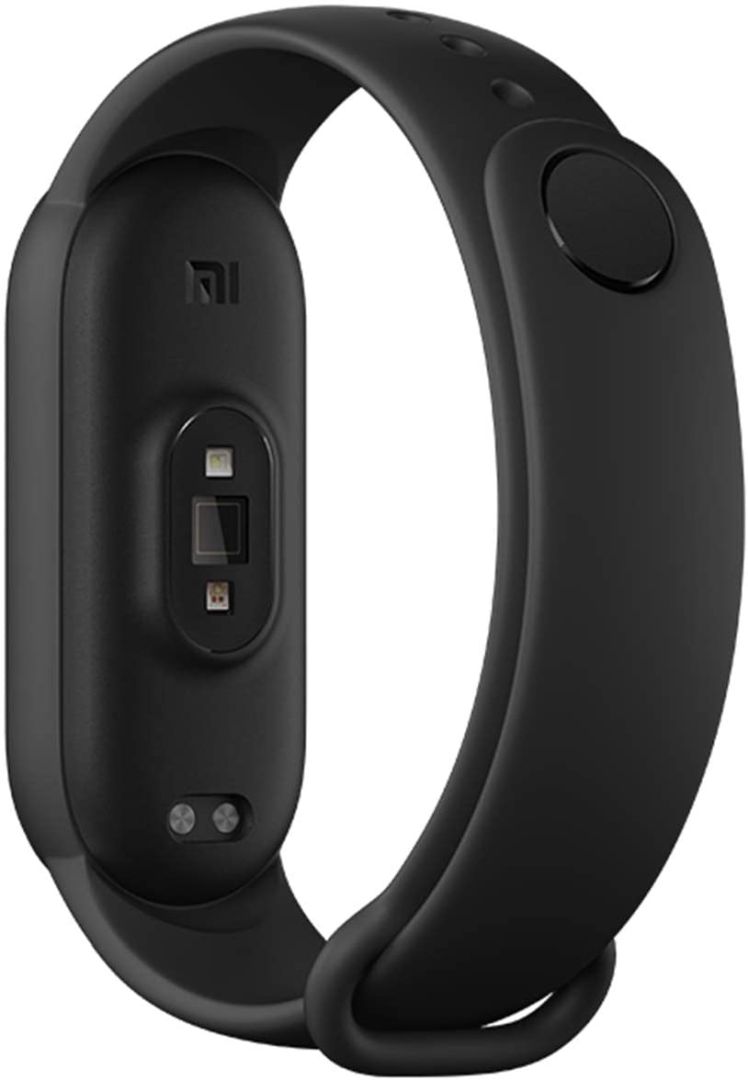
Sleep and additional functions
In order for the Mi Band 5 to record our own sleep patterns, we first have to activate the corresponding tracking including heart rate measurement in the app. The band then tracks our sleep and wake-up times as well as the duration of the individual sleep phases. Even though the significance of this data remains limited, we could at least determine that the Mi Band 5 reliably recognized the sleep times and that the result of the sleep analysis matched our subjective perception.
The app allows us to compare our own sleep data with other users and makes recommendations on how we can improve our own sleep quality. The Xiaomi Mi Band 5 also reliably records when we take a nap during the day to compensate for a lack of sleep. Finally, there is an integrated alarm clock that reliably wakes us up via vibration. The Mi Band 5 itself did not interfere with sleeping and felt comfortable throughout.
In addition to sleep recording, the tracker also has three other functions that can be used in various ways in everyday life: The Mi Band 5 determines our current stress factor based on the pulse measurement when we activate the measurement manually. If we feel stressed, we can activate a breathing exercise directly on the tracker to relax. Women can also record their menstrual cycle to get a prediction of when their next period will start, which can be a great help in your everyday life.
Battery life
The Mi Band 5’s battery has a slightly reduced capacity of 125 mAh compared to the Mi Band 4, but this is hardly noticeable in practice. Similar to the predecessor, the Xiaomi Mi Band 5 runs and runs and runs. A runtime of two weeks with fully activated heart rate measurement, sleep monitoring and five half-hour to one-hour workouts per week was no problem for the tracker. The Mi Band 5 has also adapted the fast charging time of a good hour and a half from its predecessor.
Mi Band users should be particularly pleased: Detaching the tracker from the wristband is not necessary for the first time with the Mi Band 5. Instead, we can charge the tracker directly at the heart rate sensor on the back via the included charging cable without having to remove the wristband.
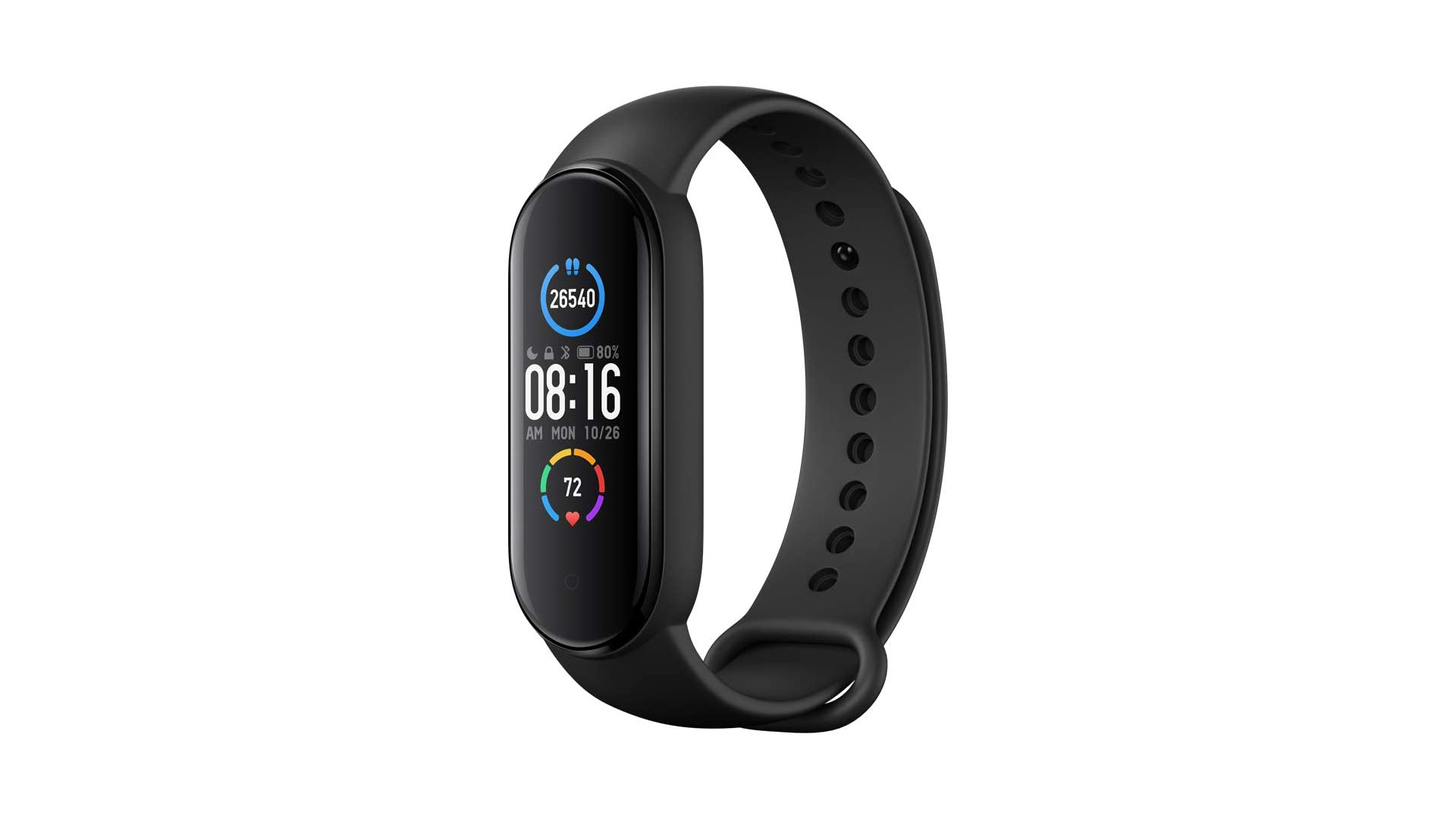
Price
The Mi Band 5 remains true to its heritage as an inexpensive fitness tracker and is currently available at a street price of just under 33 Euros. Replacement wristbands are already available for a few Euros from various third-party suppliers.
Pros
- fairly big display
- great heart frequence sensor
- low net weight
- 11 sport features
- magnetic battery loading
Cons
- short(ish) battery life
- no GPS support
Conclusion
Xiaomi consistently develops the Mi Band further with the fifth version of the tracker: In particular, the better display and the lack of ads in the app were well received by us in the test. At the same time, the manufacturer still has a very specific target group in mind with the Xiaomi Mi Band 5, namely hobby athletes and people who are looking for a cheap tracker for everyday activities.
Those who do sports regularly and rely on extensive training options and associated tracking should look elsewhere, for example, at Garmin or Polar – if only because the Mi Band 5 does not have its own GPS. For everyone else, the same applies as for the Mi Band 4: Xiaomi’s Mi Band 5 is a very fairly priced fitness wristband with a large number of useful features that other manufacturers could learn from.
